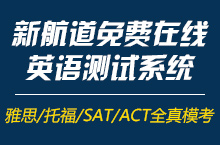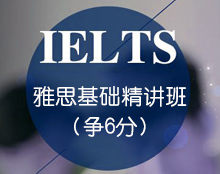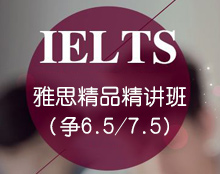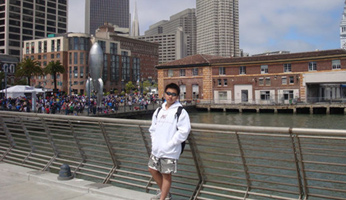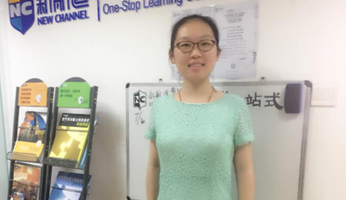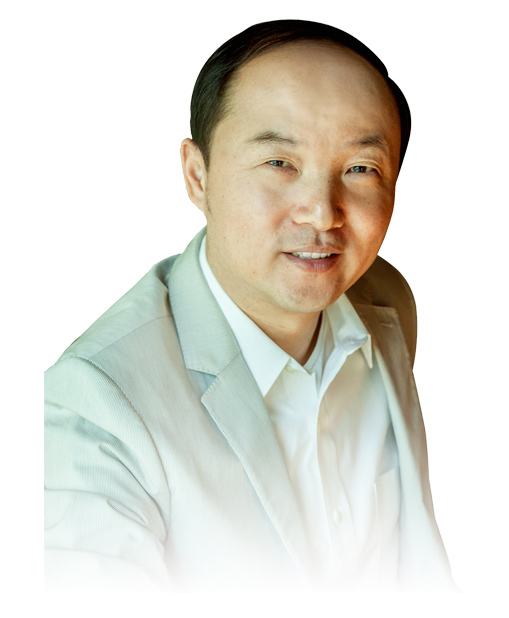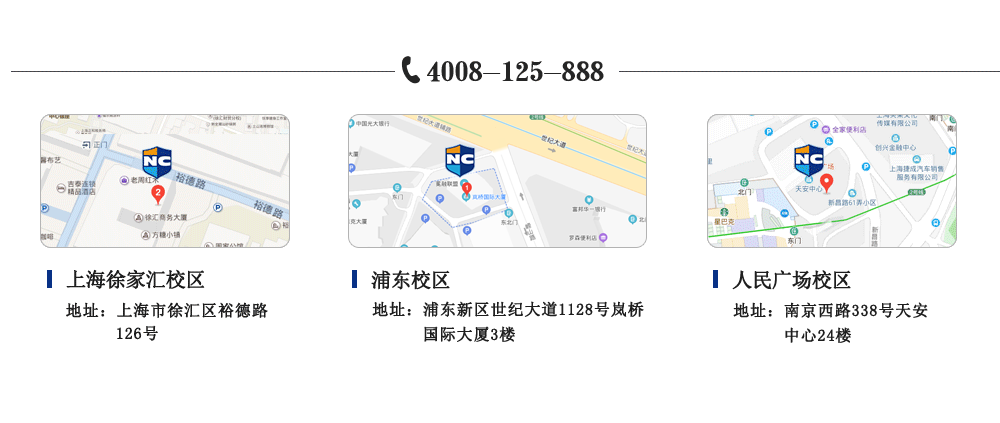【TPO聽力】TPO聽力40題目+答案+MP3聽力下載
TPO聽力40題目+答案+MP3聽力下載
Conversation 1
QUESTIONS
1. Why does the student go to see the professor?
a. To find out all the requirements for a project
b. To discuss a service gap at a restaurant
c. To get help understanding concepts relevant to his project
d. To get help with designing a business plan
2. Why does the professor mention a student in another class?
a. To describe an interesting topic for a project
b. To explain the cause of her initial confusion
c. To point out that she has not received e-mails from all her students yet
d. To indicate that she has several students doing projects about restaurants
3. Why does the professor talk about the cafeteria on campus?
a. To give an example of an effective service design
b. To illustrate how service standards can inform service design
c. To help the man understand a service problem
d. To illustrate the concept of a service gap
4. What do the speakers imply about the bakery the student went to recently? Click on 2 answers.
a. The apple pie he bought there was not as good as it usually is.
b. The bakery's service design was inefficient.
c. The bakery needs additional employees to fix a service gap.
d. The bakery did not meet a service standard.
5. What does the professor say the student should do for his project?
a. Compare an on-campus service model with an off-campus one
b. Interview the service manager and employees at the cafeteria
c. Recommend service improvements at the cafeteria and the bookstore
d. Analyze the service design of a nearby restaurant
Conversation 2
QUESTIONS
1. Why does the woman go to see the man?
a. To ask for his help in getting a job off campus
b. To apply for job in the library archives
c. To find out if the man has received her letter of reference
d. To get help on a project she is doing with a professor
2. During the conversation, what surprises the man?
Click on 2 answers
a. That he does not remember the woman
b. That the woman knows the library has a job opening
c. That the woman came to him for help
d. That the woman is still interested in photography
3. What does the man imply about Professor Ryan?
a. Professor Ryan will decide who gets the library assistant job.
b. Professor Ryan was in charge of the library’s photography exhibit.
c. Professor Ryan was impressed with work the woman did on the photography exhibit.
d. Professor Ryan recommended the woman for the library assistant job.
4. What will be the main responsibility of the new library assistant?
a. Cataloging photographs taken during the university’s hundreth year
b. Planning and setting up photography exhibits at the library
c. Writing research reports about photographs in the library’s collection
d. Finding photographs requested by library users
5. What does the woman imply about the library assistant job?
Click on 2 answers.
a. She feels she is not qualified for it.
b. She is reluctant to apply for it because it does not involve taking photographs.
c. She thinks it would fit in well with her class schedule.
d. She thinks it would require too much of her time.
Lecture 1(Art History)
QUESTIONS
1. What point does the professor make about the writing of a formal analysis in art history?
a. Its objective is to identify common features of several works of art.
b. Its most important part is the explanation of an artwork's significance.
c. Several styles of writing a formal analysis are used by art historians.
d. A particular approach is required to present Information about an artwork.
2. According to the professor, what will students need to do before writing the art history paper?
a. Look at examples of formal analysis in textbooks
b. Take notes on the artwork they will write about
c. Go to different museums before selecting a topic for the paper
d. Study the historical context of the artwork they will write about
3. Why does the professor mention an English class?
a. To explain the difference between visual language and written language
b. To explain that students need good writing skills for their assignment
c. To point out similarities between a poetry paper and the students' assignment
d. To point out that many art historians become writers
4. What does the professor recommend as a way to understand the relationship between different parts of an artwork?
a. Looking for lines that connect different parts of the work
b. Examining the artwork from several different angles
c. Looking for similar colors the artist used throughout the work
d. Determining how the viewer's eyes move around the work
5. Why does the professor talk about his own experience analyzing the painting of a little boy?
a. To point out a common misconception about formal analysis
b. To stress the importance of looking at an artwork thoroughly
c. To show why a formal analysis should not emphasize small details
d. To provide an example of an artwork that is easy to analyze
6. The professor describes three sections the art history paper should contain. Place them in the order in which they should appear in the paper.
Click on a phrase. Then drag it to the space where it belongs.
1.
2.
3.
Answer Choices
a.Analysis of the design elements the artist uses
b.Discussion of the meaning of the artwork
c.Summary of the appearance of the artwork
Lecture 2 (Environmental Conservation)
QUESTIONS
1. What is the discussion mainly about?
a. Results of privatization in the cod-fishing industry
b. Laws that regulate the cod-fishing industry
c. A recent study on cod-fishing techniques
d. Problems related to the overfishing of cod
2. Why does the professor compare Cape Cod to Newfoundland?
a. To explain how some of Cape Cod’s waters first became privatized
b. To illustrate the enormous size of Cape Cod’s seventeenth-century cod population
c. To explain why large-scale cod fishing began later in Cape Cod than elsewhere
d. To highlight the results of two different evolutionary pressures on cod
3. What change did scientists notice around Cape Cod after the 1940s?
a. The amount of pollutants dumped into the ocean increased dramatically.
b. Trawling ships violated fishing regulations more often.
c. The cod population's diet became less diverse.
d. Cod began to mature at a younger age.
4. What point does the professor make about reproduction among small cod fish as compared to larger cod fish?
a. Eggs produced by smaller cod are less likely to survive.
b. Smaller cod produce fewer eggs.
c. The offspring of smaller cod do not live as long
d. Smaller cod produce eggs fewer times per year
5. What is the professor's opinion of privatization for the management of an environmental resource?
a. Privatization is an imperfect tool.
b. Privatization should be tried more often.
c. Privatization usually results in political conflicts.
d. Privatization usually results in the best outcome.
6. According to the professor, what was the result of the 200-mile exclusive economic zone declared by the United States and Canada?
a. The cod population moved further out to sea.
b. The cod population began to recover.
c. More trawlers began fishing around Cape Cod.
d. Penalties for overfishing were toughened.
Lecture 3(Environmental Science)
QUESTIONS
1. What is the main purpose of the lecture?
a. To argue that carbon emissions today are not the only factor responsible for global warming
b. To provide evidence that rates of global carbon emissions fluctuate over time
c. To show the importance of distinguishing between different types of carbon emissions
d. To describe different ways carbon is removed from the atmosphere
2.What aspects of outer space does the professor emphasize?
Click on 2 answers.
a. Its vastness
b. Its cold temperatures
c. The absence of life there
d. Its role as the ultimate source of energy on Earth
3. According to the professor, how do the oceans remove carbon from the atmosphere?
Click on 2 answers.
a. By dissolving it
b. Through a process of condensation and precipitation
c. By storing the remains of marine animals
d. Through the regulation of air temperatures
4. Why does the professor mention mining?
a. To explain why the price of fossil fuels is continually rising
b. To explain how certain fuel sources can be recovered from the ocean floor
c. To explain why coal and oil are more difficult to obtain than natural gas
d. To explain why fossil fuels contribute to an excess of carbon in the atmosphere
5. What does the professor mean when he refers to biomass carbon as "current carbon"?
a. It is the fuel source most widely approved by environmentalists today.
b. It is part of a balanced system of carbon emission and absorption.
c. It is circulated throughout the oceans by the movement of ocean water.
d. It readily combines with other carbon molecules to produce long chains.
6. Why does the professor say this
a. To let students know that the term “greenhouse effect” will be tested
b. To indicate that the definition of “greenhouse effect” will be discussed
c. To suggest that his previous definition of “greenhouse effect” was imprecise
d. To acknowledge that there is controversy surrounding the use of the term “greenhouse effect”
Lecture 4 (United States Government)
QUESTIONS
1. What issue does the professor mainly discuss?
a. Government purchases of private property to expand transportation routes
b. The rising cost of public transportation in the United States
c. The transfer of certain public assets to for-profit companies
d. Whether voters can be persuaded to approve toll increases
2. Why does the professor mention highway construction that took place during the 1950s and 1960s?
a. To point out changes in voter attitudes toward toll and tax increases
b. To suggest that mistakes were made when the highway system was built
c. To explain why traffic congestion is not as bad as it used to be
d. To make a point about the current need for infrastructure repairs
3. According to the professor, why do governments consider selling or leasing pieces of infrastructure?
Click on 2 answers.
a. Governments often have difficulty balancing their general budgets.
b. The money that governments receive from user fees has gone down in recent years
c. Political considerations limit governments’ ability to raise money for maintenance.
d. Private companies are better able to estimate the cost of infrastructure repairs.
4. What does the professor imply about some people s concerns over privatizing parts of an infrastructure?
a. Their concerns are likely to diminish in the future.
b. Their concerns are completely justified.
c. Their concerns suggest that voters need better information.
d. Their concerns have mostly been disregarded by governments.
5. What does the professor imply about secondary roads?
a. Their availability tends to limit toll increases on major highways.
b. They can be more expensive to repair than major highways are.
c. Increasing numbers of them are becoming toll roads.
d. Commuters are attracted to them for their scenic qualities.
6. According to the professor, what is likely to happen when a bridge provides steady revenue for a private company?
a. The bridge will be well maintained in the long term.
b. The company will not raise tolls.
c. Other companies will be interested in buying the bridge.
d. Voters will pressure the government to buy back the bridge.
TPO40聽力答案:
Conversation 1
1-3 CBA 4 BD 5 D
Lecture 1
1-5 DBCDB 6 CAB
Lecture 2
1-6 DBDBAC
Conversation 2
1 A 2 BC 3-4 CD 5BC
Lecture 3
1 C 2 BC 3 AC 4-6 DBB
Lecture 4
1-2 CD 3 AC 4-6 BAC
上海新航道整理!由于音頻文件不便上傳,想要托福TPO40聽力題目+答案+MP3音頻下載的同學,請提交“姓名+電 話+郵箱”,我們將于15個小時內發送給您!



